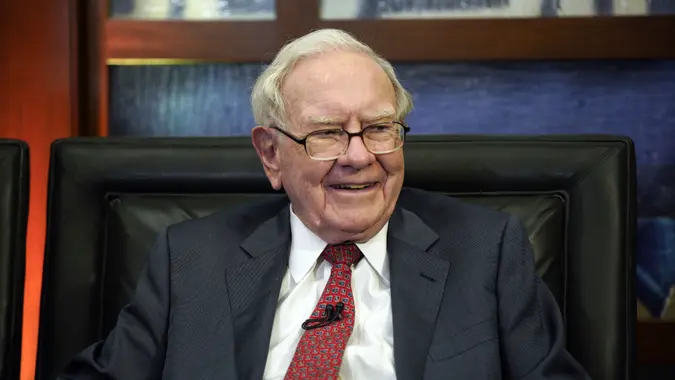Jaspreet Singh: How To Start Investing In Your 30s

Commitment to Our Readers
GOBankingRates' editorial team is committed to bringing you unbiased reviews and information. We use data-driven methodologies to evaluate financial products and services - our reviews and ratings are not influenced by advertisers. You can read more about our editorial guidelines and our products and services review methodology.

20 Years
Helping You Live Richer

Reviewed
by Experts

Trusted by
Millions of Readers
Jaspreet Singh is an attorney and entrepreneur who owns and operates the popular “Minority Mindset” YouTube channel, with over 1.7 million subscribers. Singh is a believer in the 75/15/10 plan for allocating your resources, which is a bit different from the more traditional 50/30/20 split recommended by Elizabeth Warren and numerous financial pundits.
Singh particularly focuses on how investors in their 30s are in a great position to build significant long-term wealth by using a more aggressive budgeting strategy. Here are some of the highlights of Singh’s plan as pointed out on his Aug. 20, 2023, YouTube broadcast.
What Is the 75/15/10 Plan?
The 75/15/10 budgeting strategy goes like this: 75% goes to living expenses, 15% goes to investments, and 10% goes to savings. In other words, you need to learn to live off just 75% of your income, which should cover everything from your rent/mortgage to your insurance, entertainment, food, transportation, auto loans, and/or other debt payments, such as student loans.
Your next 15% should go to your investments. While a chunk of this should go to your 401(k) or IRA, Singh also says that it’s key to start generating passive income with this money. As Singh puts it, “The wealthiest people in this country don’t make their money from their job. They make their money from their assets.” Singh is a particularly strong believer in earning passive income, such as from real estate. In Singh’s view, you should build up a portfolio to the point that you can live off your passive income at some point, even before retirement.
The last 10% of your income should go to your savings. This money should be used primarily as an emergency fund, ideally stocked with at least six to 12 months of living expenses. At that point, Singh recommends that you shift this 10% allocation to your investment pool, increasing the amount that you put towards your investments to 25% of your income.
How Is It Different From the Standard 50/30/20 Advice?
Singh’s approach to budgeting is slightly different from the common 50/30/20 breakdown espoused by numerous financial commentators. Under that strategy, you’d use 50% of your income for your needs and obligations, 20% for savings and debt payments, and 30% for everything else that you might want. This allocation is slightly less aggressive in terms of saving for your future, but it likely gives you more current satisfaction. Singh would likely suggest that the 50/30/20 model simply isn’t aggressive enough to ensure that you’ll have ample savings by the time you retire. However, it will likely take more fiscal discipline to adhere to the 75/15/10 model.
What Other Advice Does Singh Have for Those in Their 30s?
Although the 75/15/10 plan is a pithy way to draw attention to a budgeting strategy, Singh offers ample additional advice to those in their 30s looking to save and invest. Specifically, he emphasizes the need to trim expenses and sacrifice now in order to live more comfortably in the future. In the Aug. 2023 video, Singh gives an example of denying yourself an expensive handbag now in exchange for being able to freely buy the bags of your choice in the future without having to worry about how much they cost. Singh suggests, however, that you have to supplement current sacrifice with a continual quest to earn more money – so that you can save and invest even more in turn.
Singh recommends that young investors physically write down their income and expenses from the prior month to see in black and white exactly where their money is going. He suggests that if you undergo this exercise, it’s inevitable that you will make some lifestyle changes as you will see in sharp focus where you are overspending.
Another Singh recommendation is that if you don’t have to spend money, don’t. Invest it instead. If you try to keep up with the Joneses and buy fancy cars or big homes like all of your friends and neighbors, Singh says, you’ll likely end up in debt and/or overspending, because most people, even those that seem wealthy, are in that precarious financial situation themselves.
How Saving Early Makes a Huge Difference
Singh says that “becoming wealthy is surprisingly simple” if you follow three steps: spend less than what you make, work to earn more money, and invest what you don’t spend. The earlier you can start this process, the “easier” it will be. Even if you wait until age 30 to begin saving, for example, you could still amass roughly $1 million in retirement savings by age 65 if you sock away just $100 per week at an 8% annual rate of return.
More From GOBankingRates
 Written by
Written by  Edited by
Edited by 

























